Through a detailed analysis, he explains how brands influence demand, supply and value generation.
Its content is an essential tool for understanding brand economics and its application in business strategies.
The brand adds value to businesses.
Brands begin as simple trademarks and related legal rights. Through careful management and skillful promotion, they come to exert a powerful influence on consumer behavior. Brands create legal and psychological barriers against competition in an increasingly commoditized world.
We live in a reality where tangible assets and production capacity are in excess. Brands and other intangible assets generate differentiation, which drives consumer demand and higher shareholder returns.
How do brands shift the demand curve?
Brands can modify demand in several ways:
- Expanding the overall market
- Acquiring new users
- Converting users from competitors
- Retaining current customers
- Increasing the share of customer spending
- Cross selling to new products
- Applying a price premium for perceived value
The volume of demand for a commodity increases as its price decreases. The slope of the curve indicates how elastic the price of the commodity is. If a commodity is highly elastic, its curve will be flatter, meaning that a slight change in price generates a large variation in the quantity demanded. Conversely, a product with low elasticity will show a steeper curve (See Figure 1: Economic model for a commoditized product).
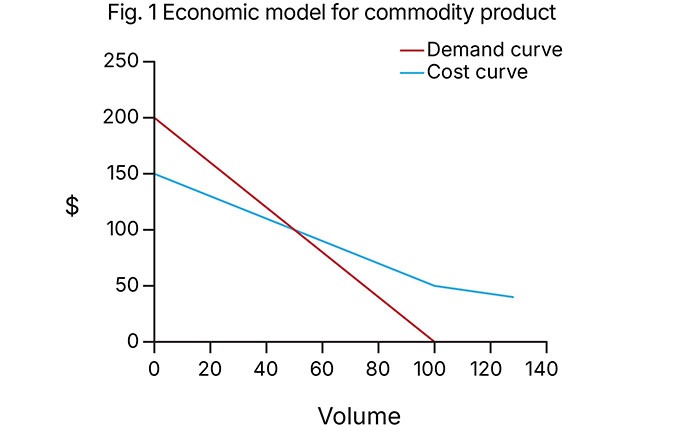
The average cost of production of a product generates a second curve. The point where the two curves intersect represents the break-even point. (See Figure 2: Economic model for a commoditized product).
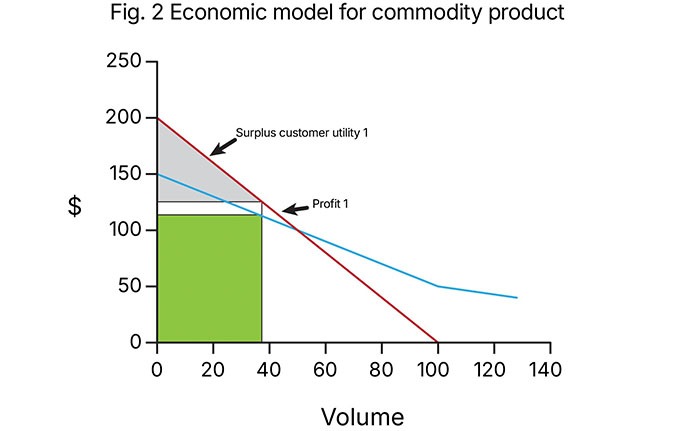
When a strong brand is introduced, the demand curve shifts to the right. This means that, at a given price, consumers will buy more of the branded product or service, thus increasing profits (See Figure 3: Strong brand value shifts the demand curve).
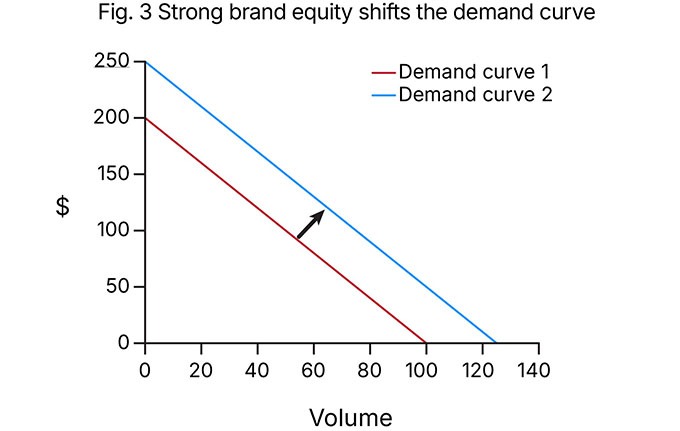
In most cases, the demand curve also becomes more inelastic. That is, the quantity consumers buy remains stable even when the price increases, as they do not switch to another generic product that cannot offer the intangible benefits of the brand (See Figure 4: Same price; higher volume).
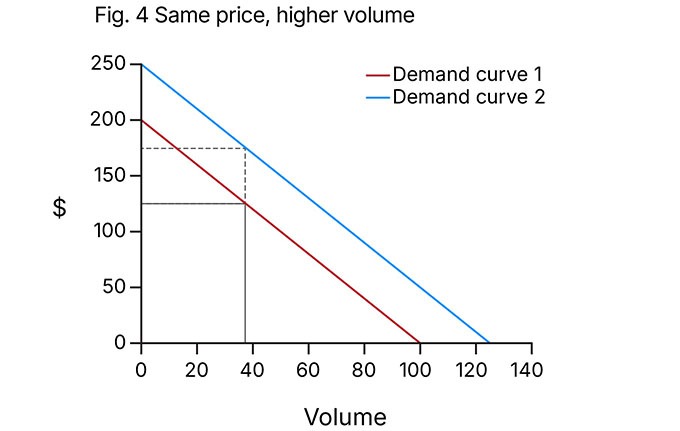
If the brand is strong enough, consumers will be willing to pay higher prices without reducing their purchase volume, which reinforces demand stability. (See Figure 5: Higher price; same volume).
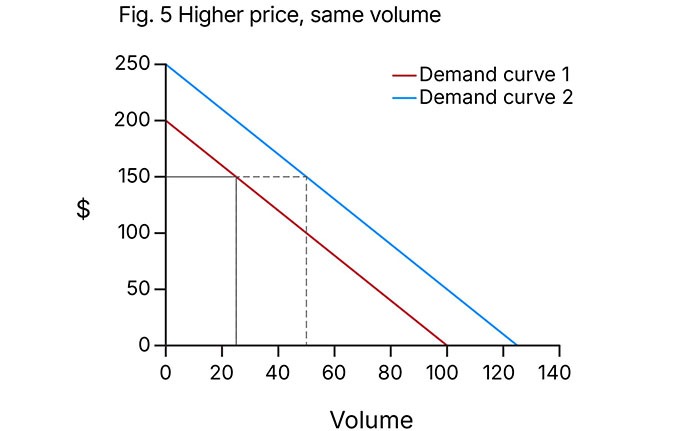
How do brands affect the supply curve?
Branding also impacts a company’s cost structure and operational efficiency. A strong brand can:
- Generate recognition and loyalty, reducing sales conversion costs.
- Obtain better conditions with suppliers and distributors.
- Reduce recruitment and talent retention costs, as employees want to work in prestigious companies.
- Facilitate access to financing with lower interest rates, since investors perceive lower risk.
- Achieve economies of scale in production.
Suppliers, employees, and financiers are willing to offer their services at a lower cost if they can be associated with a prestigious brand. (See Figure 6: Strong brand value shifts the supply curve).
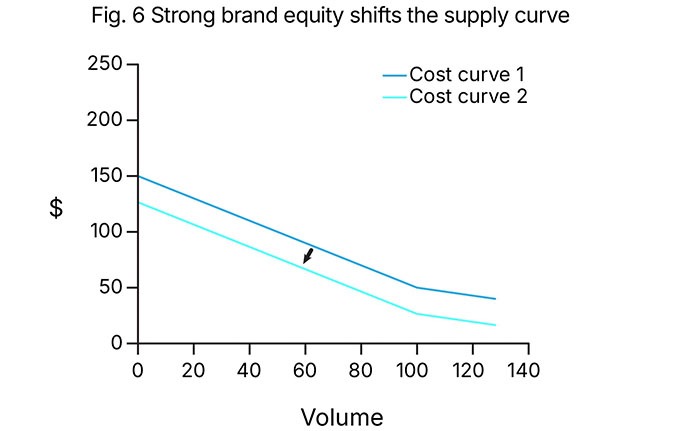
The end result is a benefit for both consumers and the company: the demand curve moves in one direction while the cost curve moves in the other.
This allows selling at the same or lower price, making higher profits and creating greater perceived value for the consumer. (See Figure 7: Economic model for a powerful brand).
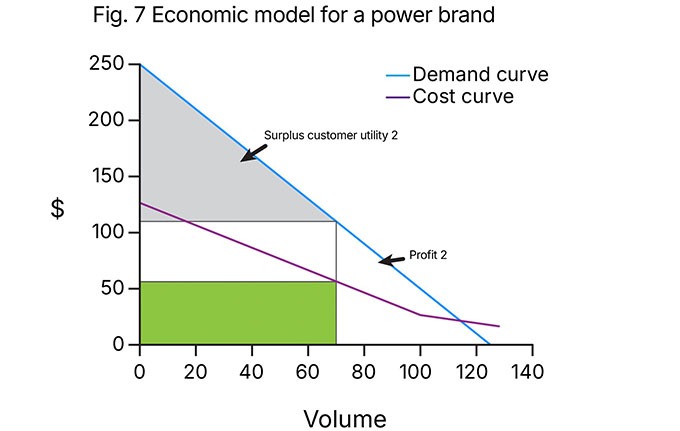
The economic model of brands is based on the interaction between demand and supply curves. In practice, these effects can be complex and require detailed statistical analysis.
Since 1996, Brand Finance has helped companies understand and quantify these impacts on their economic performance, providing clear methodologies and analysis tools to maximize the value of their brands.
2025 Considerations
Current trends in branding and brand economy.
Today, brand building is influenced by new factors:
1. Digitization and data intelligence
Brands are using advanced data analytics to personalize the consumer experience.
- example: Amazon recommends products based on previous buying habits, increasing conversion.
2. Economics of experience
- Consumers no longer buy just products, but complete experiences.
- Example: Starbucks charges a premium for its coffee thanks to the in-store experience and loyalty with its app.
3. Sustainability impact
- Brands that incorporate sustainable practices have a competitive advantage.
- Example: Patagonia has built its identity around environmental responsibility, which allows it to maintain loyal customers despite higher prices.
4. Social networks and influencer marketing
- Purchasing decisions are increasingly influenced by recommendations from content creators and digital communities.
- Example: Nike collaborates with athletes and influencers to strengthen its positioning without relying solely on traditional advertising.
Closing
Brand economics not only influences demand and supply, but is evolving with new market dynamics. Understanding these principles enables companies to build stronger, more profitable brands in an increasingly competitive environment.





